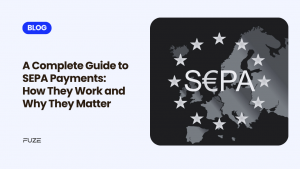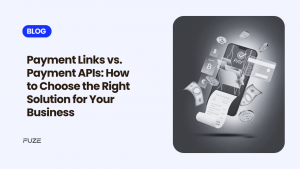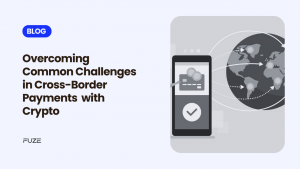There’s a quiet shift happening in the world of investing. It’s not echoing from trading floors or plastered on every financial news headline yet. But if you pay close attention to where the smart money is moving, one thing becomes clear: Web3 is becoming a magnet for forward-thinking capital.
This isn’t just about buying Bitcoin or NFTs. It’s about how a new breed of investors – digital-first, macro-aware, and opportunity-driven, are starting to treat Web3 not as a gamble, but as a strategy.
So, what’s changed? And why now?
The Evolution of the Investor Mindset
Investing used to revolve around traditional vehicles like mutual funds and long-term stock picks. Then came the retail investing boom, driven by easy access to trading platforms and an appetite for faster gains. But now, we’re seeing the rise of a new kind of investor, one who isn’t just chasing returns, but actively thinking about the future of infrastructure, money and technology.
These digital-first investors are deeply curious. They think globally. They question everything. And most importantly, they’re no longer asking, “Is crypto a scam?” They’re asking, “How early am I?”
Web3 as a Macro Hedge
Currently, the global economy is giving investors plenty of reasons to rethink traditional markets. In the US, President Donald Trump has floated the idea of a blanket 10% tariff on imports, sparking fears of a new wave of inflation and trade wars. Central banks are caught between battling inflation and avoiding a recession. Meanwhile, geopolitical tensions are reshaping supply chains and the dollar is showing signs of strain as global alliances shift.
In short: the old playbook isn’t working like it used to.
For a growing class of investors, Web3 is starting to look like a macro hedge. Not just against inflation, but against broken systems, regulatory overreach and against the fragility of centralized financial institutions.
Decentralized networks don’t shut down because of political turmoil. Crypto doesn’t wait for a central bank to raise or lower rates. In that sense, Web3 isn’t just a new asset class, it’s a new paradigm.
The Institutional Shift
For a long time, traditional finance scoffed at Web3. It was either too volatile, too unregulated, or just plain weird. But now, things are shifting quietly, but unmistakably. Asset managers are launching tokenized funds. Family offices are investing in blockchain infrastructure. Fintech-giants are integrating stablecoin rails for cross-border payments.
The institutional crowd doesn’t follow hype. They follow returns, resilience, and regulatory clarity. And increasingly, they’re seeing that Web3 ticks all three boxes.
Beyond Tokens: Infrastructure is the Real Investment Thesis
Sophisticated investors are no longer simply purchasing digital assets in anticipation of speculative returns. Instead, they are strategically allocating capital toward the foundational infrastructure of the Web3 ecosystem, ranging from blockchain protocols and compliance frameworks to stablecoin issuers, middleware solutions, and cross-chain interoperability layers.
These investments are building the underlying systems that will support next-generation use cases such as global payments, digital identity, and decentralized computing.
The Role of Regulation: Clarity is Taking Shape
Regulatory uncertainty has long been a challenge for the Web3 space, often making it difficult for both builders and investors to move forward with confidence. But there are signs of meaningful progress.
Countries like the UAE and Singapore are setting thoughtful precedents with frameworks designed to support innovation while maintaining oversight. Europe’s MiCA regulation is offering clearer guidelines, and even in the US, recent court rulings are beginning to shape a more defined legal landscape.
This growing clarity isn’t just beneficial for those building in the space, it also helps investors gain confidence. Regulation, when done right, can bring the legitimacy and stability that larger pools of capital look for.
From Hype Cycles to Real Use Cases
Web3 has gone through its share of bubbles, from the ICO frenzy of 2017 to the DeFi summer of 2020 to the NFT explosion in 2021. But every cycle leaves behind something useful: better tech, smarter builders, and wiser users.
Today, we’re seeing real-world use cases take center stage:
- Cross-border payments settled in stablecoins in minutes.
- Blockchain-based identity systems used in high-trust applications.
- Tokenized real estate that improves liquidity and access.
- DAOs that fund everything from public goods to climate initiatives.
Why Is Smart Money Entering Now?
Because they recognize the patterns. Periods of low noise and quiet building have historically signaled the early stages of meaningful innovation. Rather than chasing market tops, strategic investors focus on owning the foundations of what’s to come.
They also understand that real breakthroughs don’t always wait for perfect conditions. Often, they take shape gradually, then suddenly.
Web3 may still be in its early stages, but the direction is becoming clearer. Many forward-thinking investors are already allocating capital, backing builders, and testing what’s possible.
Final Thoughts: Web3 as a Long-Term Opportunity
No one can predict the future with certainty. But when we consider the convergence of macro shifts, regulatory clarity, and rising adoption, Web3 presents a compelling long-term opportunity.
For investors who think beyond the next quarter and aim to position ahead of the curve, this isn’t just an experiment, it’s a chance to participate in the next evolution of finance, ownership, and digital infrastructure.
Web3 is no longer just a fringe idea. It’s quietly becoming part of the mainstream conversation.
And this time, the most thoughtful investors are choosing to be early.
Disclaimer: Virtual assets carry significant risks, including high volatility and potential loss of your entire investment. They are not backed by governmental protections, and recourse may be limited in case of loss. Always assess your risk tolerance, fully understand the risks, and seek independent financial advice if needed before investing.
Frequently Asked Questions
1. Why are investors suddenly treating Web3 as a serious asset class?
Web3 is no longer just about speculative tokens. It’s evolving into a foundational layer for next-gen finance and digital infrastructure. Forward-thinking investors are seeing it as a macro hedge against inflation, centralized fragility, and shifting global systems.
2. Isn’t Web3 still too volatile and unregulated for institutional capital?
That used to be the case. But growing regulatory clarity in markets like the UAE, Singapore, and the EU (MiCA) is giving institutions the green light. Today, large players are investing not just in assets, but in infrastructure, middleware, and compliance rails.
3. What’s the difference between past hype cycles and the current investment trend?
Previous waves were driven by hype (ICOs, NFTs). This time, it’s about substance—real-world use cases like cross-border stablecoin payments, tokenized assets, and digital identity systems. The focus has shifted from speculation to utility and infrastructure.
4. What kind of investors are entering the Web3 space now?
A new breed of digital-native, macro-aware investors. These are people who question the old financial playbook, think globally, and view Web3 as an early-stage strategy—not a gamble. Institutions, family offices, and high-net-worth individuals are joining in.
5. Why is now considered the right time to invest in Web3?
Because “quiet” periods are when real innovation happens. Smart money looks for early-stage opportunity during low-noise cycles. With global macro uncertainty and a shift in financial infrastructure, Web3 is increasingly seen as the next frontier.







